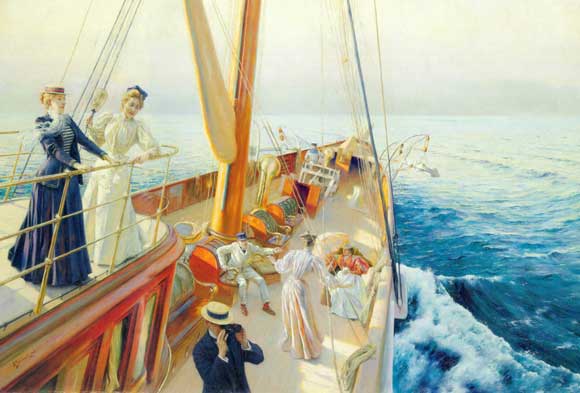This is part 1 of a 3-part series on the New York Herald. All three posts will eventually appear on Fashion Herald, a blog about 34th Street district retail.
One of the fathers of modern journalism, James Gordon Bennett Sr. founded the
New York Herald in 1835 in a small office on Wall Street. Bennett vowed that his new penny paper would have none of the political alliances and proselytizing found in other papers.
 |
| Cross-eyed, Bennett once wrote that his affliction came from watching the "winding ways of [President] Martin Van Buren." Photo: Library of Congress |
Bennett had excellent intuition for what was missing in journalism of his time, and how to appeal to the general population. With an almost prophetic sense of the financial
crisis to come in 1837, the
Herald was the first general interest paper to pen a financial column. "Money Markets" debuted within a week of the paper's first issue in 1836 and was immensely popular. In it, Bennett exposed stock market fraud and speculated that the rise and fall of the stock market was not accidental.
Bennett also tapped into what have since become public obsessions -- crime, scandal, and celebrities. Lurid descriptions and relentless coverage of these are common today, but in the 1830s, murders and the like were scarcely reported, if at all. The
murder of prostitute Ellen Jewett in 1836, and the
Herald's subsequent front page coverage of the event and trial changed all of that.
The Herald was the first paper to take reporting to that special macabre place by printing detailed descriptions of the courtroom proceedings and crime scene. Bennett was also one of the first editors to publish interviews with key witnesses and others involved in the case, the first being a lengthy interview with Jewett's Madame Rosina Townsend.
For those who couldn't afford theater or concert tickets, the newspaper turned the news into its own little episodic show -- kind of like one really long
Law and Order episode. Each day readers could open the paper to a new spectacle of horrors. Because intimate knowledge of the case was dispelled daily via the paper, devoted readers could consider themselves an active part of the drama.
Bennett spared no expense on technology advances to increase the paper's reporting and production efficiency. During the Mexican-American War, he established a courier service that was faster than the post office in order to get reports from the front lines to the
Herald offices in New York City. (It was soon shut down by the postal service
.) Bennett secured a steady readership while covering the Civil War by publishing eyewitness accounts of soldiers on the front lines. To evade Secretary of War Edward M. Stanton's censorship ban on the press, Bennett printed war casualty lists. People bought editions of the paper every day in hopes of finding the names of lost loved ones. Like the Jewett trial case, this produced a regularly paying audience addicted to tragedy, though this time is was more personal.
Bennett's coverage of politics was meant to be impartial, and compared with other papers, it mostly was. The
April 15, 1865 edition of the
Herald shows a strange marriage of the grisly and the political with its Lincoln assassination coverage. Click
here to see a large version of the image below. If you enlarge it, the copy theatrically describes Lincoln's murder scene and the ensuing investigation.
 |
| Image: Library of Congress |
In 1866 Bennett Sr. passed his duties on to his son James Gordon Bennett Jr. who had long been the subject of tabloid-ish reporting in rival papers. More on him in part 2 next week.
Sorry for the lack of links, but most of this was culled from print sources, including these:
-Carlson, Oliver. The Man Who Made News: James Gordon Bennett
-Kluger, Richard. The Paper: The Life and Death of the New
York Herald Tribune
-Pray, Isaac Clarke. Memoirs of James Gordon Bennett and His
Times (google books)
-Sandburg, Carl.
Storm Over the Land: A Profile of the Civil War.
-Seitz, Don C. The James Gordon Bennetts: Father and Son,
Proprietors of The New York Herald.





